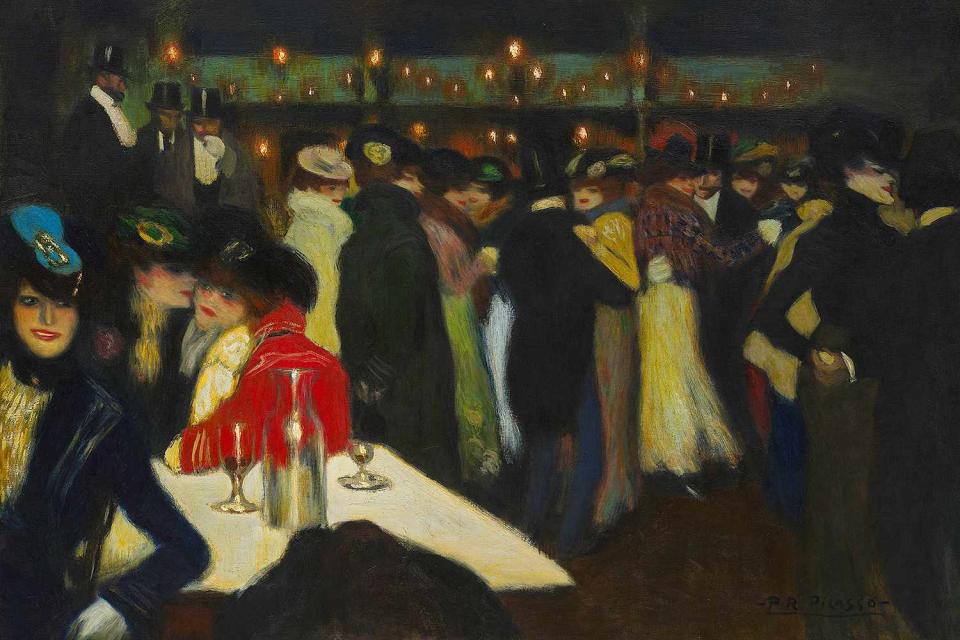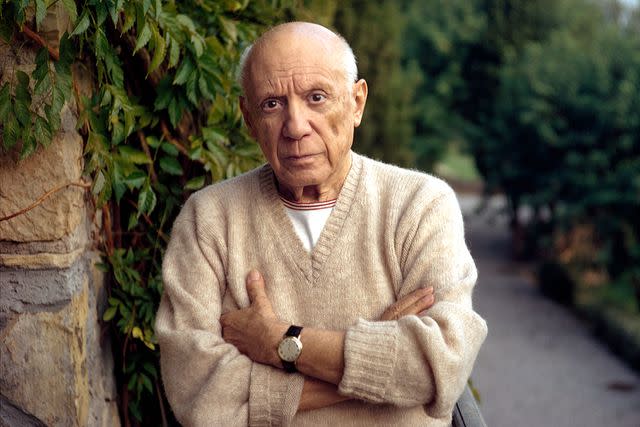N.Y.C. Museum Finds 'Hastily Covered' Little Dog Hidden in Pablo Picasso Painting
- Oops!Something went wrong.Please try again later.
One expert believes the artist painted over the image of the tiny pooch because it was too "distracting" for viewers

Pablo Picasso truly was a man of mystery.
A hidden detail has been uncovered in one of the Spanish artist's paintings hanging at the Guggenheim Museum in New York, the museum announced last week in a news release. After close examination, conservators found that a lapdog was originally included in Picasso's painting Le Moulin de la Galette, but was later painted out.
The artwork was completed after the Spanish artist's arrival in Paris in 1900, and showcases a buzzing scene captured in a Parisian dining establishment of the same name, filled with couples sipping wine and enjoying a chat, per CNN.
"As the final composition evolved, Picasso hastily covered the dog with strokes of brown paint, leaving the contour of its head evident and allowing hints of the underlying colors to show through," per the museum statement. "Picasso directed more attention toward the figures and the space by eliminating the canine. Nevertheless, he left visible clues of the compositional change, which would become a frequent practice for the artist."
Related:Man Rescued After Getting Trapped Inside Public Art Installation in Canada: 'Definitely a First'
The discovery was made by experts at the Guggenheim, New York's Metropolitan Museum of Art and the National Gallery of Art in Washington, D.C, per the museum. The finding was made ahead of the opening of their exhibition "Young Picasso in Paris", which features 10 drawings and paintings from Picasso's early works in the French capital, where he eventually settled permanently.
Never miss a story — sign up for PEOPLE's free daily newsletter to stay up-to-date on the best of what PEOPLE has to offer, from celebrity news to compelling human interest stories.

To discover the hidden pooch, conservators used a non-destructive analytical technique known as X-ray fluorescence to draw out the elemental composition of materials in the painting.
"It was interesting to me that he hastily painted over this dog, which would have been a rather compelling aspect of the composition," the Guggenheim's senior paintings conservator, Julie Barten told CNN, adding that it was an "interesting" artistic choice.
Related:London Cops Bust into Art Gallery to Rescue an Unconscious Woman — But It Was Actually a Sculpture
Experts believe the animated dog may be a Cavalier King Charles Spaniel, and that it was possibly removed by Picasso because it was too "distracting" for viewers.
"It would have stolen the show," Barten continued. "[Viewers can] look more carefully at all of these other wonderful figures in the composition — to experience the space in different ways."
Picasso had a penchant for altering his artwork, though Barten believes the dog in Le Moulin de la Galette provides the earliest evidence of the artist's tinkering, per CNN.
Barten added that the painting acts as the "centerpiece" in the show dedicated to Picasso at the Guggenheim, which joins several other international exhibitions being held to celebrate the 50-year anniversary of the artist's death in 1973.
Young Picasso in Paris will run from May 12 - August 6.
For more People news, make sure to sign up for our newsletter!
Read the original article on People.

